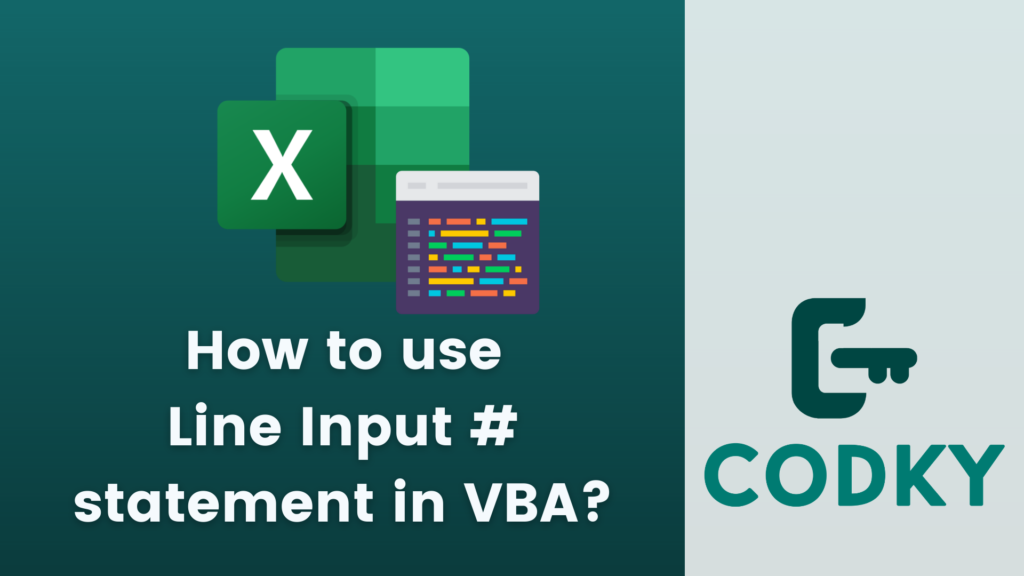
Contents
The Line Input # statement in VBA (Visual Basic for Applications) is used to read an entire line of text from a file opened in Input mode. Unlike the Input # statement, which reads data in a specific format, Line Input # reads everything from the file as a string until it encounters a newline character. This makes it especially useful for reading text files line by line.
Steps to Use Line Input #
- Open the File: First, you must open the file using the Open statement.
- Read Data Using Line Input #: Once the file is open, you can use Line Input # to read each line as a string.
- Close the File: Always close the file after you’re done reading from it.
Example
Here’s an example of how to use Line Input # in VBA:
VBA
Sub ReadFileLineByLine()
Dim filePath As String
Dim fileNum As Integer
Dim fileLine As String
filePath = "C:\path\to\your\file.txt" ' Specify the file path
fileNum = FreeFile() ' Get an available file number
' Open the file for input
Open filePath For Input As #fileNum
' Read each line from the file
Do While Not EOF(fileNum)
Line Input #fileNum, fileLine
MsgBox fileLine ' Display each line in a message box (or process as needed)
Loop
' Close the file
Close #fileNum
End Sub
In this example:
- The filePath variable is set to the full path of the file you want to read.
- We use FreeFile() to get a free file number and open the file for input.
- The Do While Not EOF(fileNum) loop continues to read each line from the file until the end of the file (EOF) is reached.
- Line Input # is used to read each line into the fileLine variable.
- After reading, we close the file with Close #fileNum.
Important Points
- Whole Line as String: Line Input # reads the entire line up to the newline character as a single string.
- No Parsing: It does not parse the data in any way, which makes it different from Input #.
- Handling Newlines: The newline character itself is not included in the string read by Line Input #.
- EOF (End Of File): The EOF function is used to check if the end of the file has been reached to prevent an endless loop.
- Error Handling: It’s good practice to include error handling, especially when dealing with file operations, to manage situations like files not existing or being inaccessible.
Line Input # is particularly useful for reading text files where data is structured in lines, such as log files or simple text data files.






